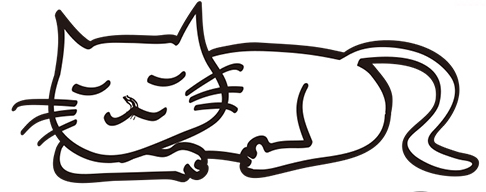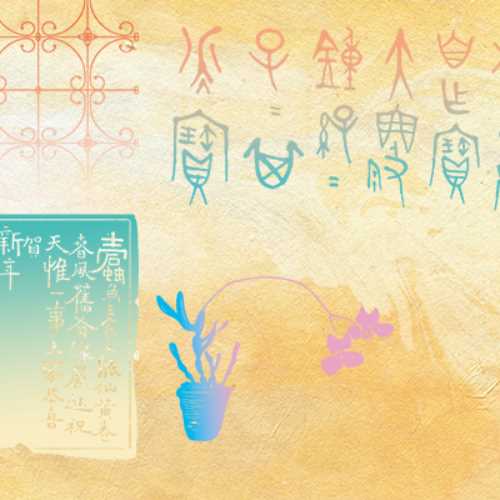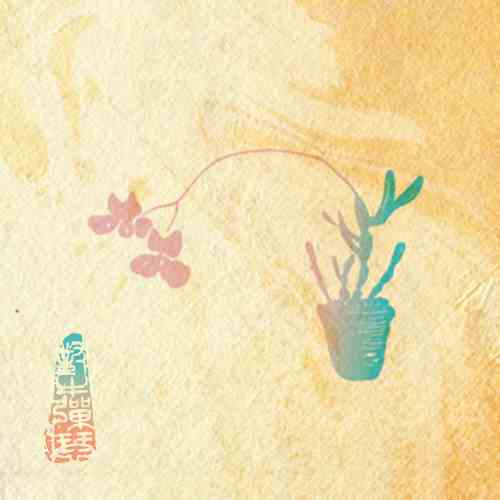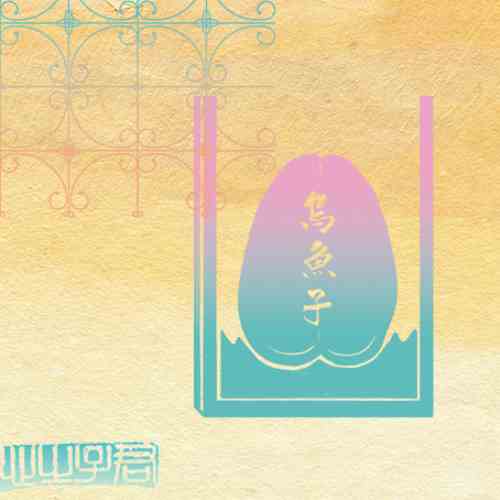The stacked cards, postcards, and letters form a harmonious circle. Here is a place where tokens of friendships are exchanged. Words can be sent to others in the form of calligraphy; calligraphy brushes and messengers that deliver messages bring happiness to senders and recipients alike. Wei Ching-Te's Lunar New Year postcard, Wang Shao-Tao's short poem thanking Su Hsiao-Te,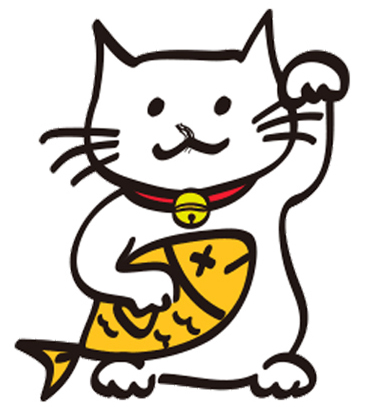 Zhao Ya-Fu's letter bidding farewell to Wang Khai-Yun, and Hung Tieh-Tao's calligraphic work for the Green Society all provide important examples of this truth. Great friendships require calligraphy to be maintained.
Zhao Ya-Fu's letter bidding farewell to Wang Khai-Yun, and Hung Tieh-Tao's calligraphic work for the Green Society all provide important examples of this truth. Great friendships require calligraphy to be maintained.
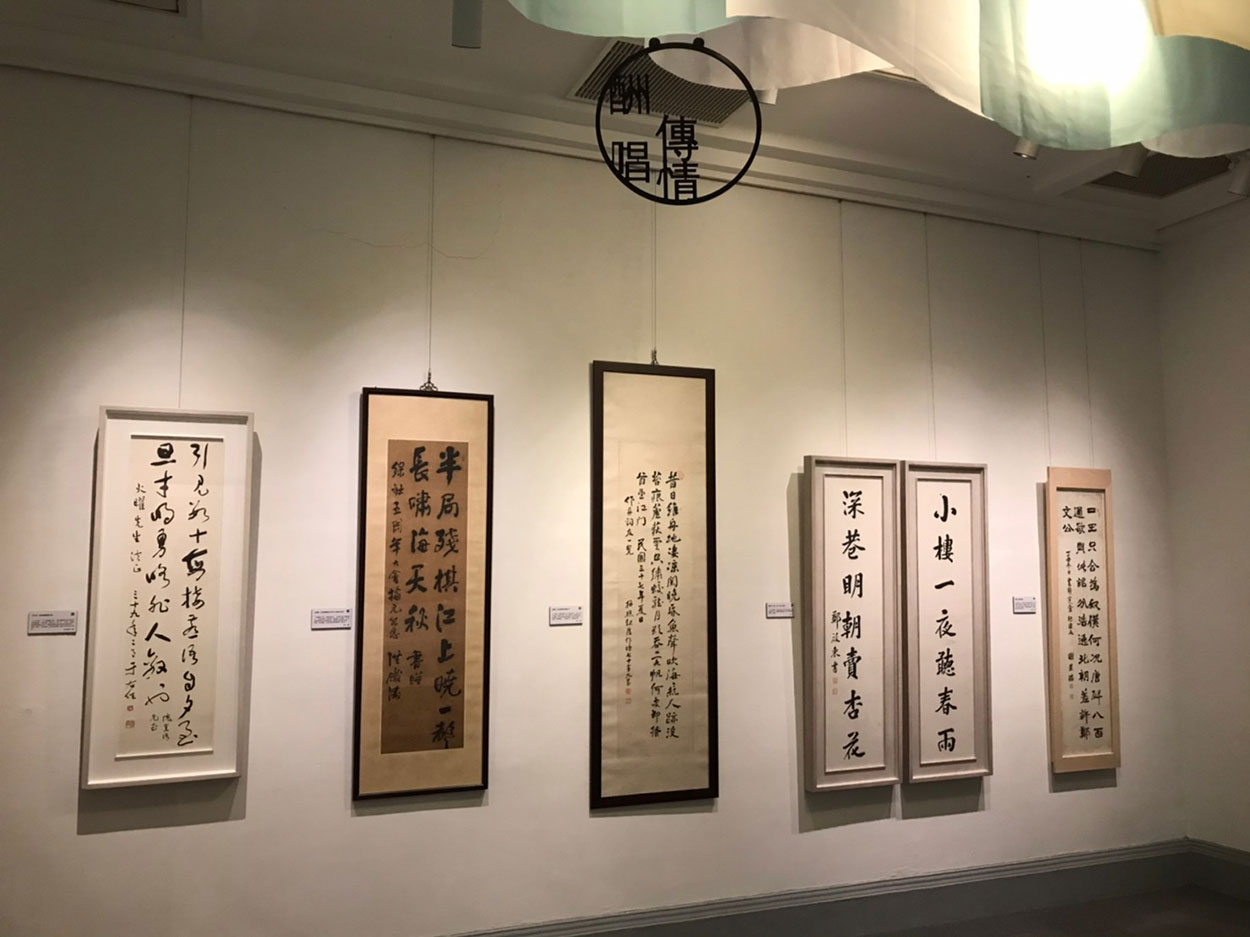
𓇬 𓇬 𓇬
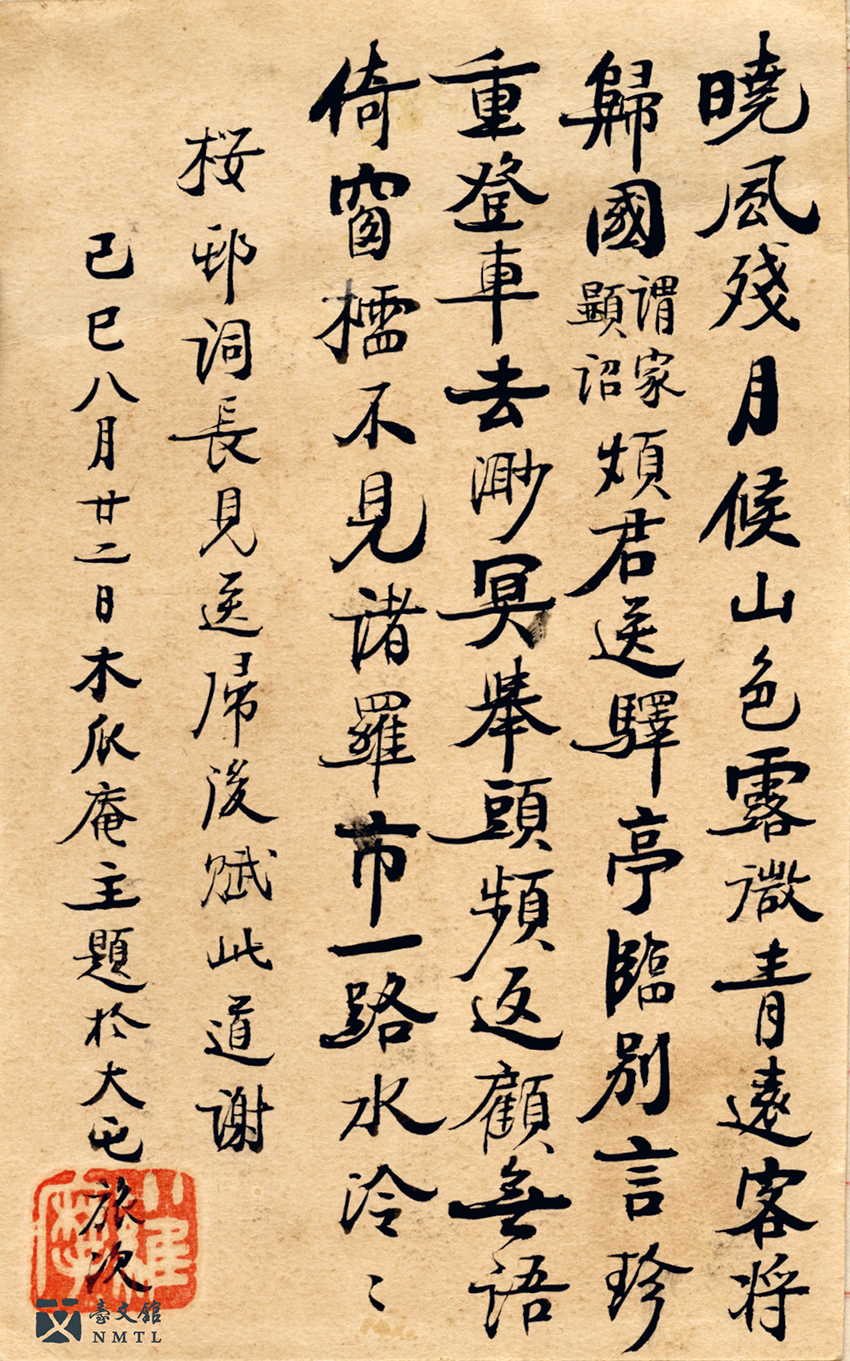
🖌 Wang Shao-Tao's postcard to Su Xiao-De
In August 1929, Wang Shao-Tao left Chiayi after bidding farewell to Chiayi poet Su Xiao-De. During his visit to Taichung, he made this five-character poem in semi-cursive style. Inspired by North Bei, the characters are unrestrained and there is a sharp contrast in terms of ink thickness. The composition of each character is square-like and neatly presented, similar to the style of Kan You-Wei; yet, it has more modest and simple characteristics without flamboyant presentation. The character of the calligrapher can be clearly seen in this work. (Donated by Wei Ching-Te's family)
𓇬 𓇬 𓇬
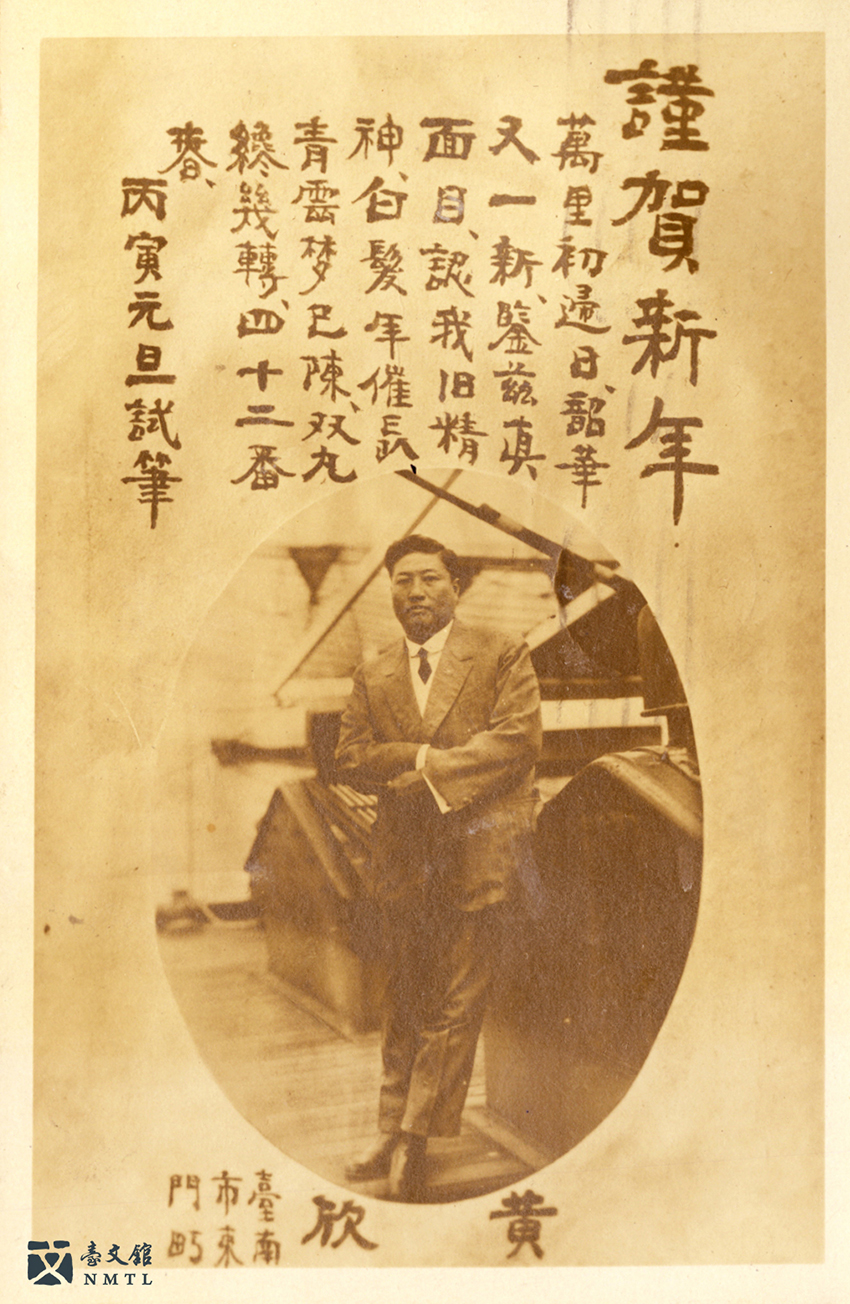
🖌 Huang Xin's New Year postcard with a portrait photo
On New Year's Day 1926, the 42-year-old Huang Xin wrote a five-character, eight-line poem in clerical style and copied it onto New Year postcards that he sent to other people. A portrait photo of him wearing a suit was attached to the poem, showing his new look and reminding others of traditions. Though the poem was written in clerical style, there are no horizontal lines obviously written with a firm first stroke and raising last stroke. "wo (我)," "Jiu(舊)," "Li(里)," "Chu(初)," "Shao(韶)," and "Hua(華)" are written in regular style, showing that, although calligraphers of the day liked the clerical style, they still could not get rid of the habit of writing in regular style.(Donated by Wei Ching-Te's family)
𓇬 𓇬 𓇬
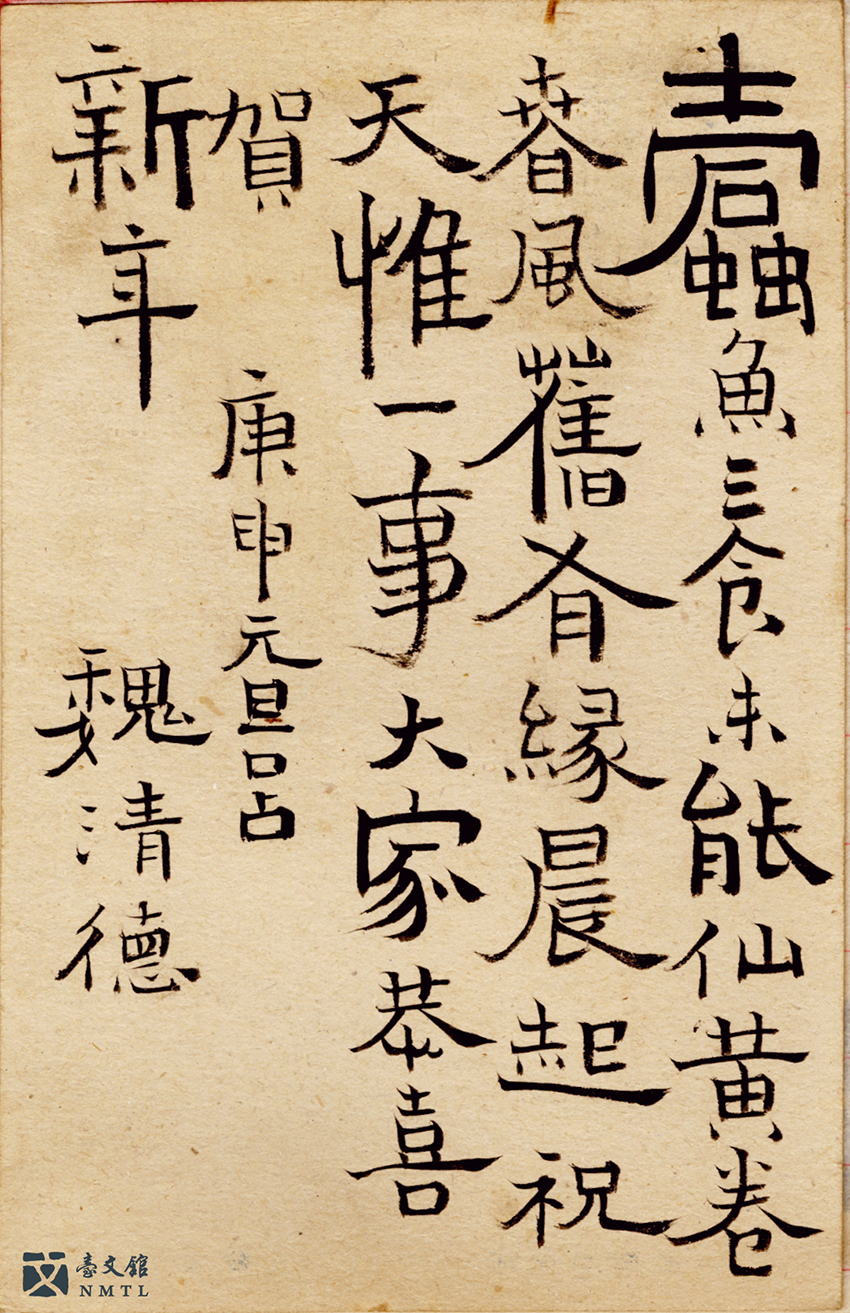
🖌 Wei Ching-Te's New Year Postcards
On New Year's Day 1920, Wei Ching-Te made a four-line, seven-character poem for the new year and wrote it on his New Year postcards. The 28 characters were mostly written in clerical style, but other styles were also used: "魚 (fish)," "仙 (fairy)," "卷 (roll)," "緣 (serendipity)," and "晨 (morning)" are written in regular style; "食 (eat)" is in cursive style; and "未 (not yet)" is in semi-cursive style. This is a mixed style that creates a brand-new way of writing calligraphy based on old styles. Wei Ching-Te transformed the old styles into a new one on his New Year cards, symbolizing transformative changes in the new year. (Donated by Wei Ching-Te's family)
𓇬 𓇬 𓇬

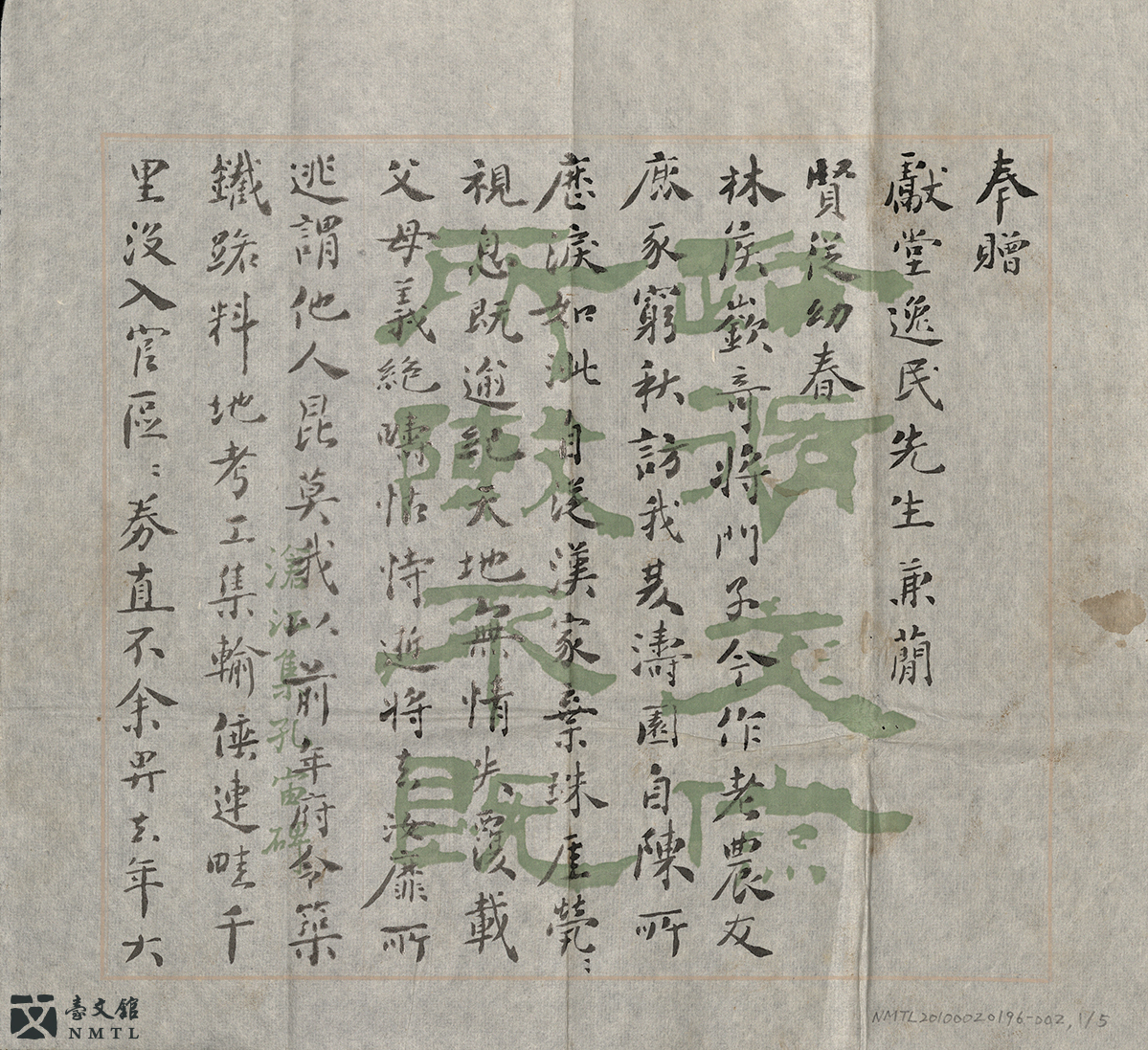
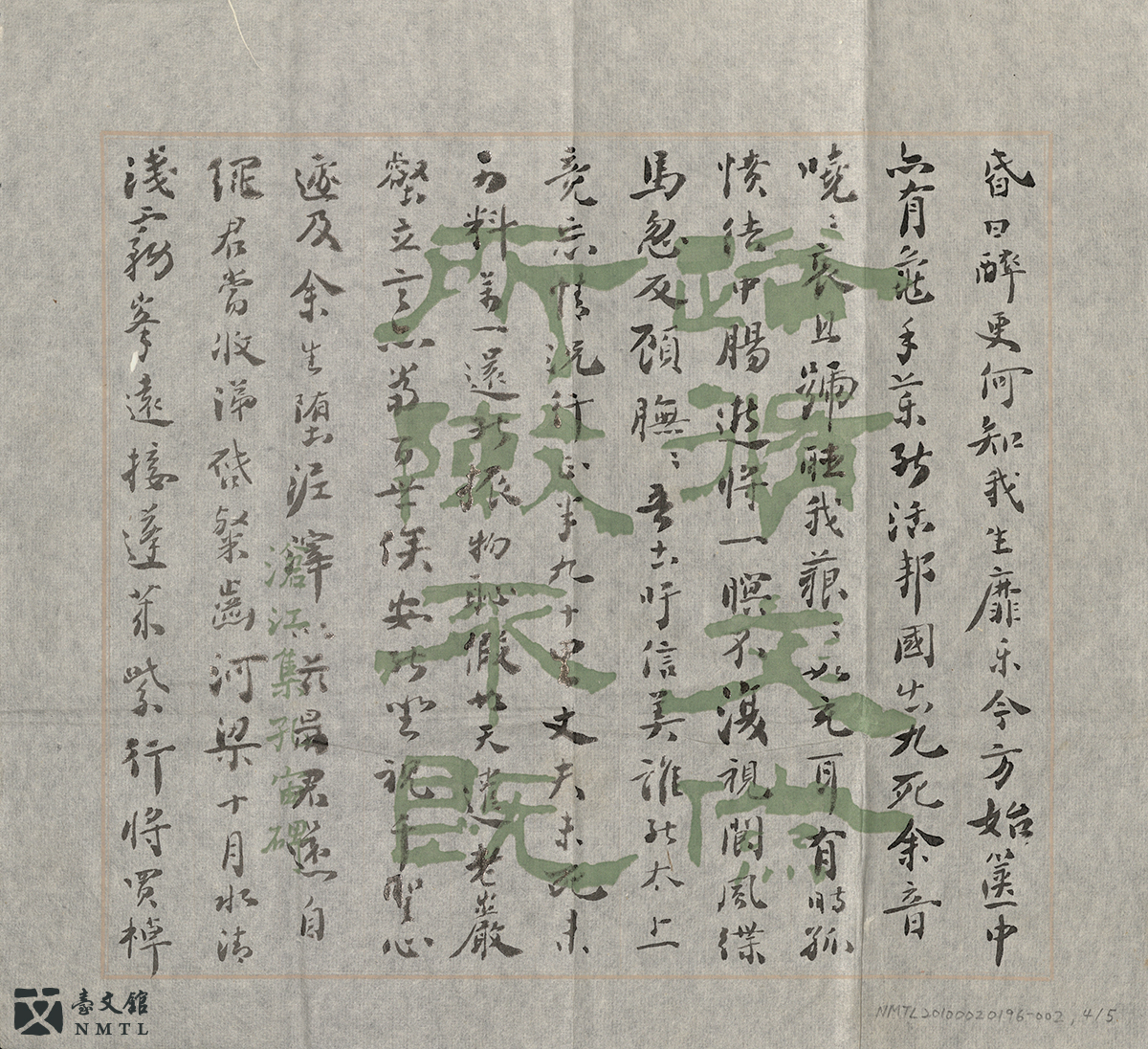
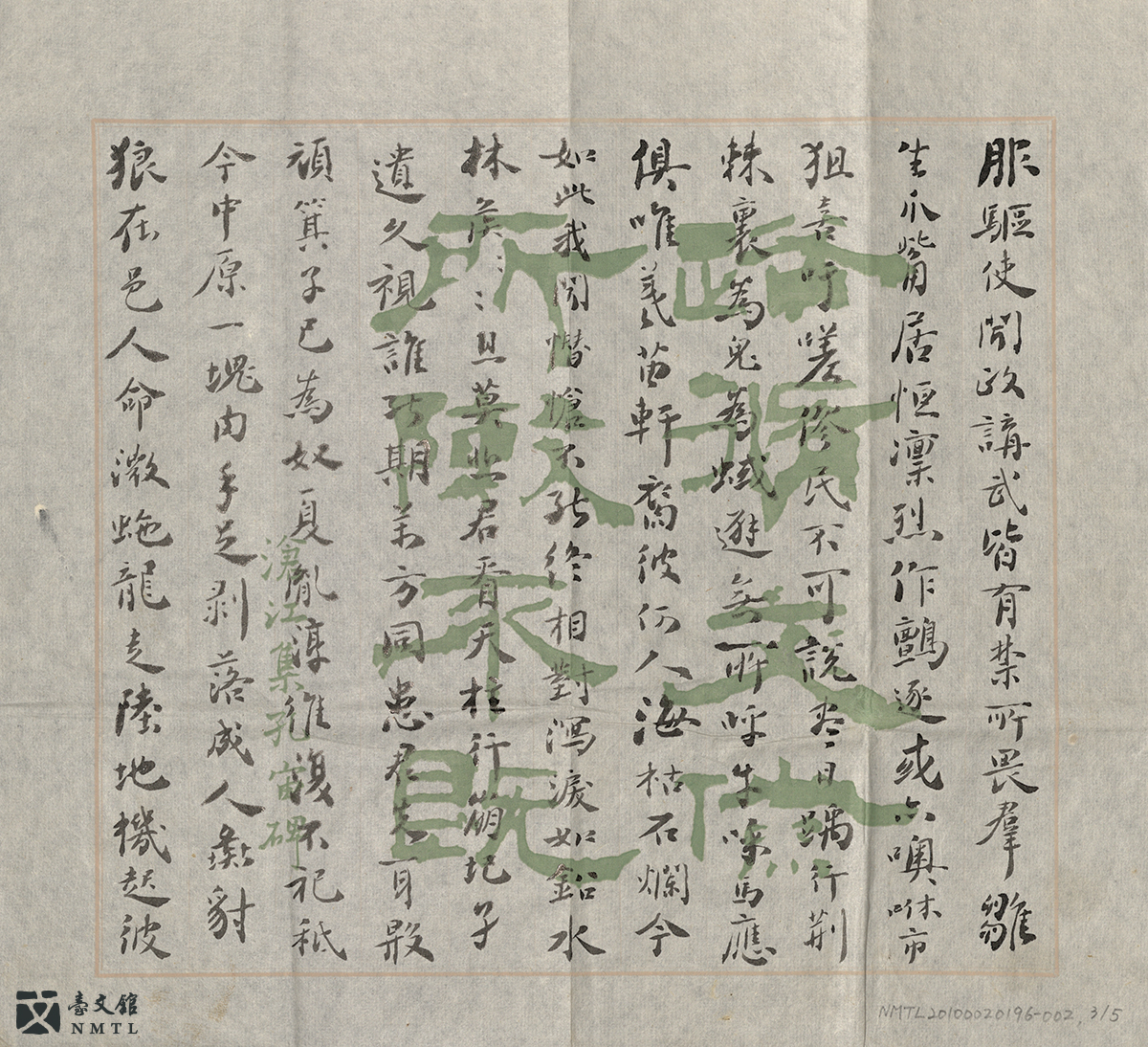
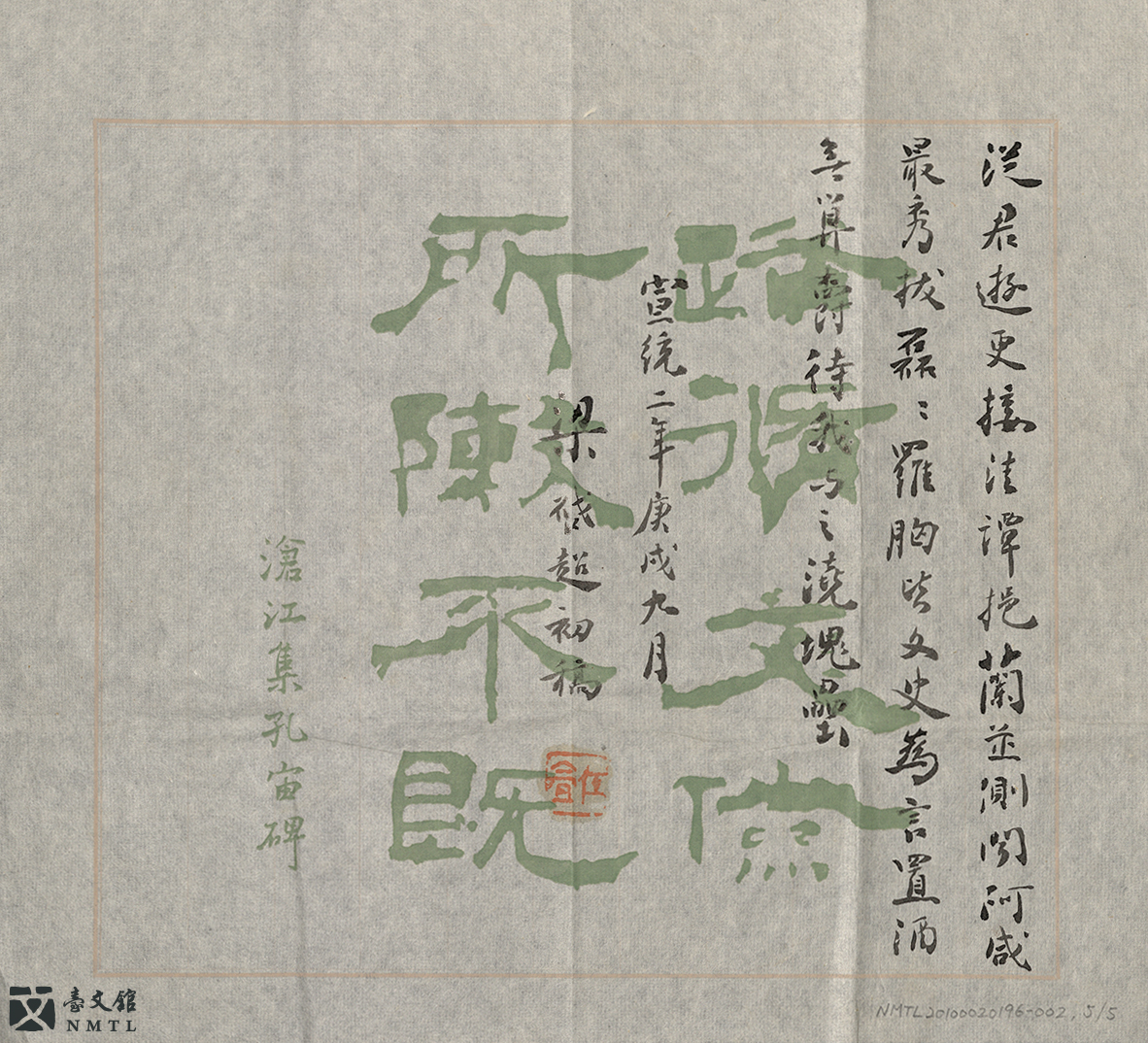
🖌 Liang Qi-Chao's gift to Lin Xian-Tan and others
In 1910, Lin Xian-Tang went to visit Liang Qi-Chao in Kobe. In March of the following year, Liang travelled to Taiwan and stayed in Wufeng Lin Family's Wugui Residence. In September 1910, Liang wrote a seven-character poem in semi-cursive and regular style for Lin Xian-Tang and Lin Zi-Xiu. Liang learned Quyang Xun's style when he began writing calligraphy and then he learned about North Bei. The style of this work is elegant and neat, and the strokes are meticulous.(Donated by Huang De-Shi)
𓇬 𓇬 𓇬
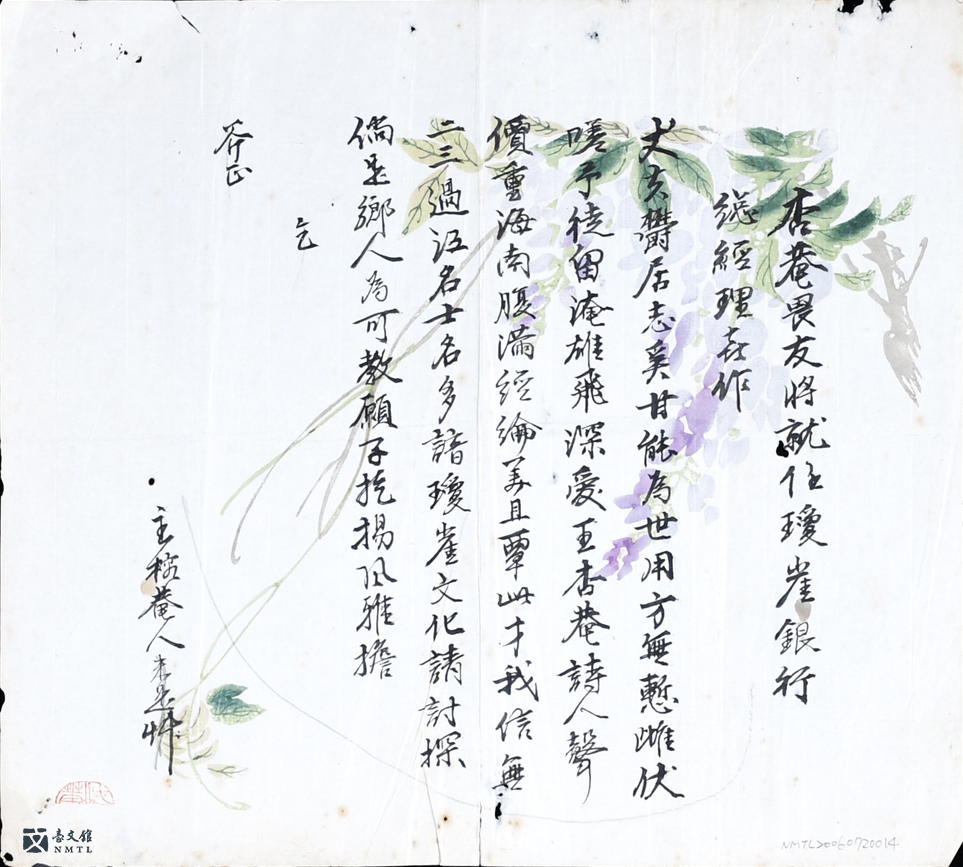
🖌 Zhao Ya-Fu's "Good Luck to Wang Khai-Yun's New Job as General Manager at Qiongya Bank"
In 1944, Wang Khai-Yun was to move to Hainan Island for a position as general manager at Qiongya Bank in Haikou City. His friend, Zhao Ya-Fu, wrote this poem on a piece of wisteria-decorated paper as a farewell gift. The characters are elegant and the style resembles that used in royal documents in the Qing Dynasty. The work is smooth and undecorated, demonstrating the practical value of calligraphy in daily life and seeking balance between intelligibility and aesthetics.(Donated by Wang Jun-Yue)
𓇬 𓇬 𓇬
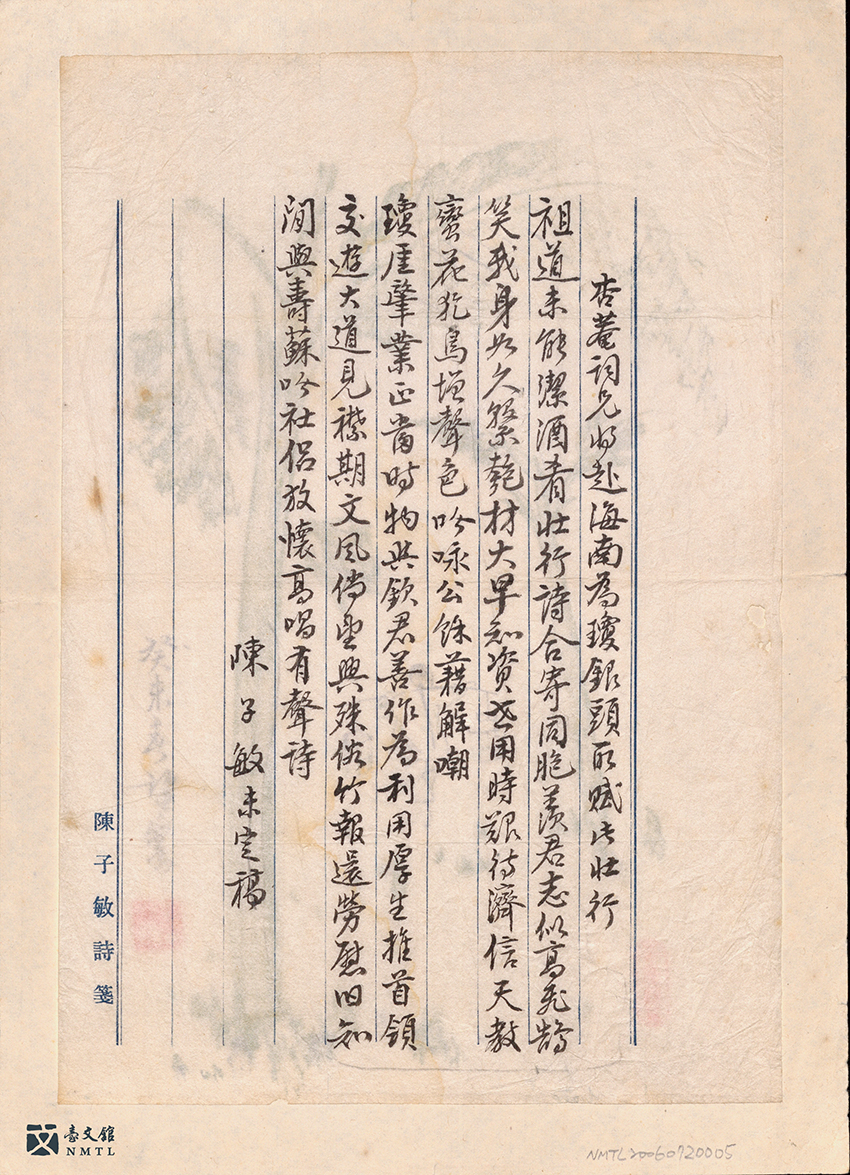
🖌 Chen Zi-Min's "Poems to Bid Farewell to Wang Khai-Yun in Semi-cursive Style"
In 1944, Wang Khai-Yun was to move to Hainan Island for the position of general manager at Qiongya Bank in Haikou City. His friend, Chen Zi-Min wrote two seven-character eight-line poems as a farewell gift. The work has a meticulous style, and the composition of each character is delicate and smooth. From the first to the last character, the entire work was neatly written with careful deliberation on the meaning of each character. This poem is a semi-cursive poem written with particular strength and speed in regular style, exuding a rich literary air.(Donated by Wang Jun-Yue)
𓇬 𓇬 𓇬
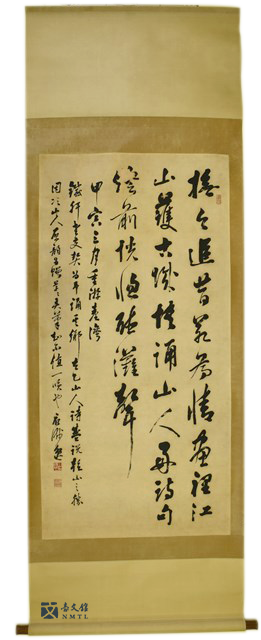
🖌 Momiyama Ishu's "A Poem to My Friend in Semi-cursive Style"
In March 1914, Momiyama Ishu traveled to Taiwan again and wrote a seven-character, four-line poem for his old friend. The poem was written in cursive style. The turn of each stroke is smooth and the compositions are excellent. Wei Ching-Te once said Momiyama Ishu's works were like "a golden snake slithering through paper." This work shows his smooth and proficient style.(Donated by Wei Ching-Te's family)
𓇬 𓇬 𓇬
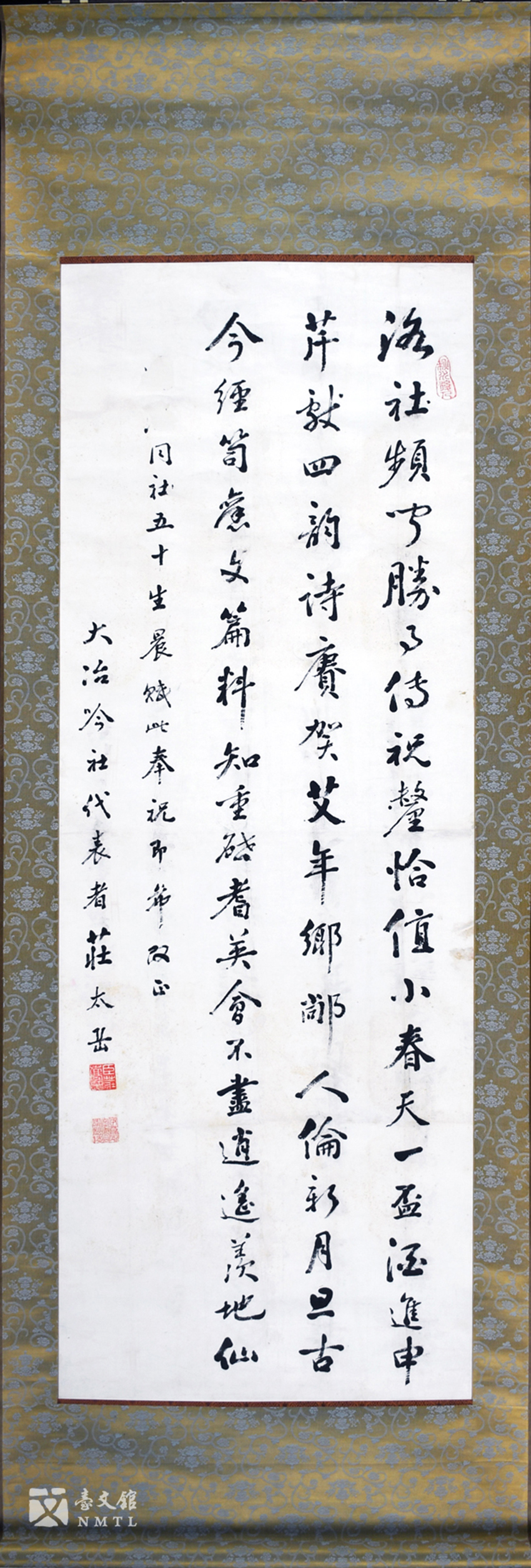
🖌 Zhuang Tai-Yue's "A Poem for Xu Jia'en's 50th Birthday in Semi-cursive Style"
This seven-character, eight-line poem was a gift given by Zhuang Tai-Yue on behalf of the Lugang Dayeyin Society to Xu Jia-En on his 50th birthday in 1937. It was written in semi-cursive style and inspired by Wang Xi-Zhi and Wang Xian-Zhi. The strokes of the characters are strong and firm while adhering to the calligraphic rules. It is one of Zhuang's representative works.(Donated by Zhuang Yong-Sui)
𓇬 𓇬 𓇬

🖌 Xie Guo-Wen's copy of "Gong Zizhen's Poem"
This seven-character, four-line poem was made in 1937. Xie Guo-Wen's gravestone was also inscribed with this poem. This poem originally came from POETRY COLLECTION OF YEAR JI HAI by Gong Zi-Zhen in the Qing Dynasty of which "Yihe Stele" is the most commended. The work emulates the style of Yasushi Nishikawa and North Bei and incorporates semi-cursive and cursive styles into regular style. This refined style matches the meaning of the poem, demonstrating the combination of calligraphy and poetic quality. Xie's original gravestone is now preserved at Fahua Temple in Tainan.(Donated by Wei Ching-Te's family)
𓇬 𓇬 𓇬
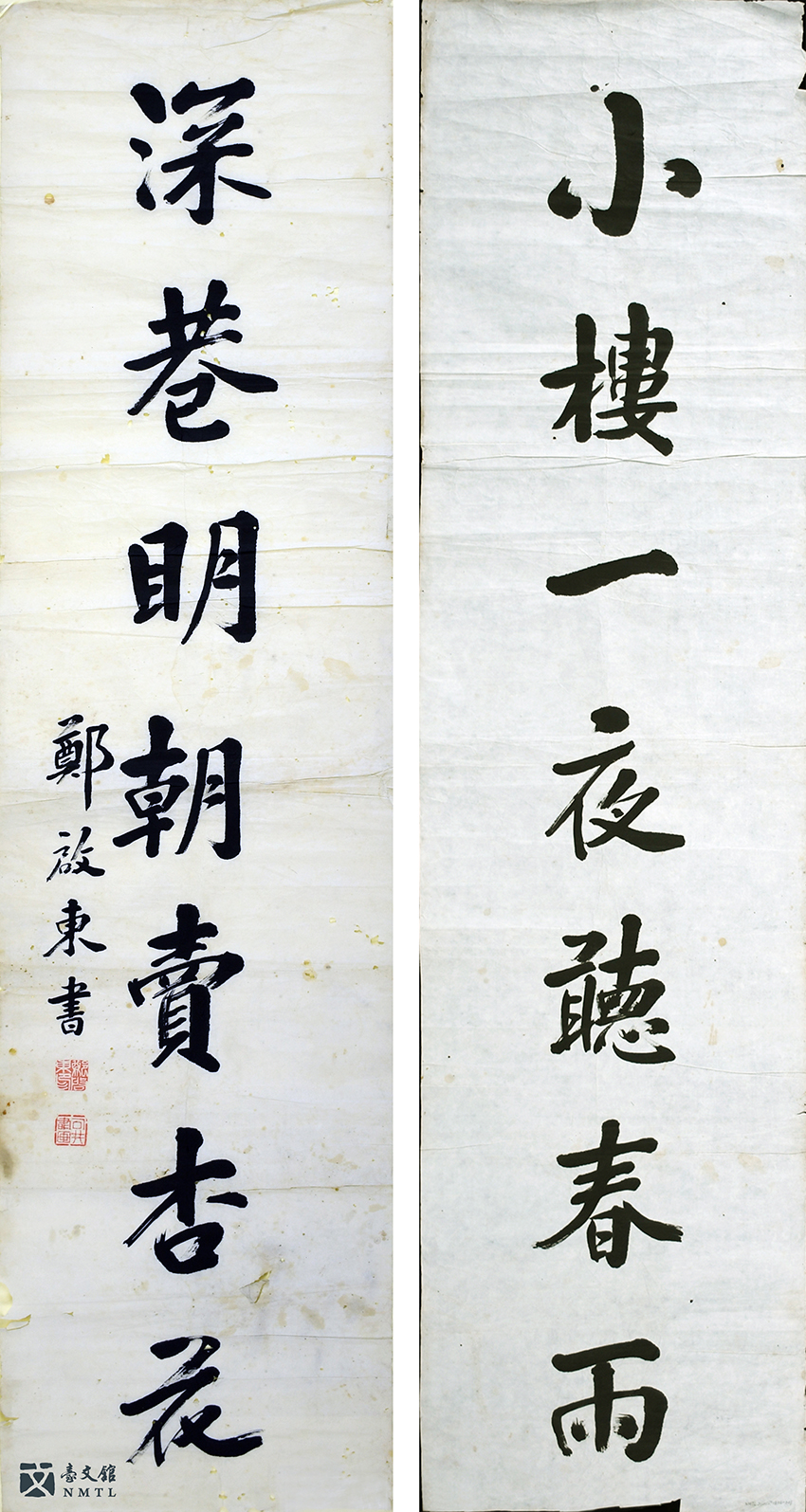
🖌 Zheng Qi-Dong's "Couplet 'Small Dwelling and Deep Lane' in Semi-cursive Style"
"Listening to the spring rain all night in the small dwelling and waking up to the sound of the vendor selling plum flowers." This couplet originally came from the poem "After Spring Rain in Linan" by Lu You in the Southern Song Dynasty. This work was made by Zheng Qi-Dong of the Nan Society during the Japanese Colonial Period. The style is a semi-cursive variant inspired by the Hanlin Academy. The characters are vibrant and powerful.(Donated by Zhan Yuan-Xiong)
𓇬 𓇬 𓇬

🖌 Shi Mai-Qiao's "A Poem to Zhan Zuo-Zhou in Semi-cursive Style"
In the summer of 1948, Shi Mai-Qiao made a five-character, eight-line poem for his friend Zhan Zuo-Zhou. It adopts a semi-cursive style with characters unevenly and arbitrarily arranged together. The characters appear natural and smooth, while the strokes are firm and calm. Compared with the strong style with which he wrote in the prime of life, this work demonstrates a deep aura and matches the images of this poem, illustrating the poet bidding farewell at the river in old age. His mindset and the expansiveness of the poem correspond with each other.(Donated by Zhan Yuan-Xiong)
𓇬 𓇬 𓇬

🖌 Hung Tieh-Tao's "To Commemorate Winning The 1st Place at the 5th Green Society Conference in Semi-cursive Style"
"半局殘棋江上曉,一聲長嘯海天秋"(translation) This sentence adapted from "To Luo Fu Daoshi" by Lu Yang in the Tang Dynasty. The then 43-year-old Hung Tieh-Tao had proficient calligraphic skills and a powerful and mature style. In 1934, Madou Green Society hosted a poetry-writing contest to celebrate its 5th anniversary. Hung's work was ranked 1st by one of the judges. This work was written for Green Society, whose director-general was Li Bu-Yun at the time, and this work was preserved.(Donated by Li Xiao-Feng)
𓇬 𓇬 𓇬

🖌 Yu Yu-Jen's "On Emperor Guangwu: Cursive Style"
In the early spring of 1950, Yu Yu-Jen wrote this to Wei Huo-Yao based on Ma Yuan's compliment of Han Dynasty Emperor Guangwu. It carries a deeper meaning as a gift to Wei, who was younger than Yu. For characters such as "引 (attract)," "每 (every)," "旦 (morning)" and "人 (people)," more pressure was applied with thicker ink, showing the fast pace at which the work was done and its great strength. The work contains a topic, a signature, a seal, the reference to the source of the text, and the year when it was made. This is truly a masterpiece of Yu Yu-Jen.(Donated by Wei Ching-Te's family)
